What Is Apple Lossless And How It Works?
As a long-time user of Apple Music, it is only understandable to be curious about the quality of the music that you are listening to. This will also be a great help for users who are just about to start using the service. If you haven’t decided yet about the streaming platform that you wish to utilize, I’d advise you to conduct an advance search regarding the audio quality that each music service offers.
This will be a good indicator whether your experience will turn out good or bad. In this guide, we will focus on what is Apple Lossless, how it usually works and how to use it.
Contents Guide Part 1. What Is Lossless Audio in Apple Music?Part 2. Difference Between Lossless and Lossy CompressionPart 3. How to Get Lossless Audio in Apple Music?Part 4. How to Download Tracks and Playlists from Apple Music for Free?Part 5. Final Words
Part 1. What Is Lossless Audio in Apple Music?
If you are familiar with Apple Music, you must already know that the tracks that you can find from its entire catalog are lossless. So, let us learn about what is Apple Music Lossless and what exactly it has to make your streaming session better. When Apple considers a file an Apple Music lossless audio, it practically means that it has a high resolution and it has good audio quality. Now, what is Apple Lossless exactly?
Apple Music now offers lossless streaming at no additional charge to its subscribers. The lossless streams will offer quality at least as good as you hear from CDs, and they can do even better. ALAC is a lossless compression format that lets Apple make smaller file sizes without impacting the integrity of the original audio recording. With lossless audio, Apple Music subscribers can listen to songs exactly as the artists recorded them in the studio and intended them to be heard.
Part 2. Difference Between Lossless and Lossy Compression
After tackling what is Apple Lossless, let us see now the differences between Lossy and Lossless Compression. From the name itself, when you say Lossy compression, expect that there would be some details and information cut off from the song being compressed. Lossless, on the other hand, is the exact opposite. This kind of procedure is used to retain all the details related to the files.
The main advantage of a lossy file is its file size. As more details are removed from the file, it will eventually result in a smaller file. Cutting off some information would not result in different audio. These details are removed without having them recognized while the track is being played. Also, it will only require a small data charge when played.
Audio enthusiasts who use high-quality speaker systems or wired headphones will benefit from lossless streaming. Apple devices (iPhones, iPads, Mac computers, HomePod, and Apple TV media players) and the Apple Music app for iOS have received automatic updates to offer lossless audio as an option. But phones that lack a headphone jack—be they Apple or Android—require the use of an external digital-to-analog converter (or DAC) to get lossless sound.
As for the lossless audio files, they are expected to be much larger in size. So, if you are to save such files, you have to make sure that there is sufficient space on your device. Since they are larger files and are produced in higher bitrates, you are most likely to consume a huge amount of data.
Part 3. How to Get Lossless Audio in Apple Music?
Now we all know what is Apple Lossless and the difference between it and lossy. As previously indicated, Apple is committed to ensuring that all Apple Music subscribers access their entire lossless audio catalog at no additional cost. If you’re not sure where to find the lossless audio feature in settings, follow these steps.
On an iPhone, iPad:
- Open your iPhone's Settings app and scroll down to tap Music.
- Under Audio, tap Audio Quality. Toggle on Lossless Audio.
- You can also choose whether you want lossless music all the time or only when you're on Wi-Fi, and if you want your downloaded music to be lossless too.
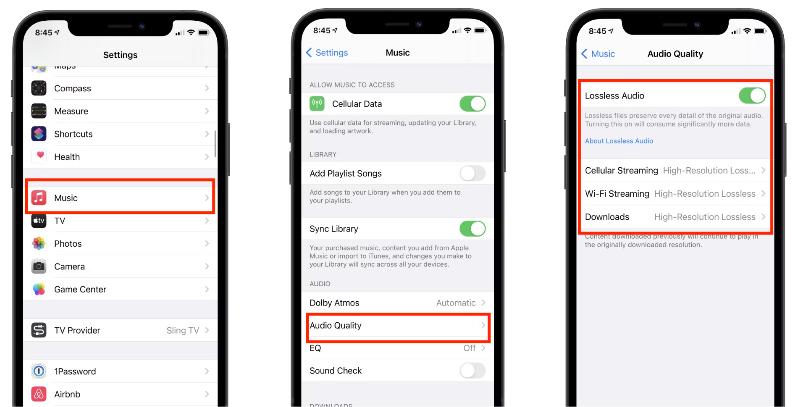
On an Android:
- Open the Apple Music app.
- Select Settings > Audio Quality.
- Toggle the switch next to Lossless Audio to turn it on.
- Select your preferred audio quality setting for Wi-Fi Streaming and Downloads.
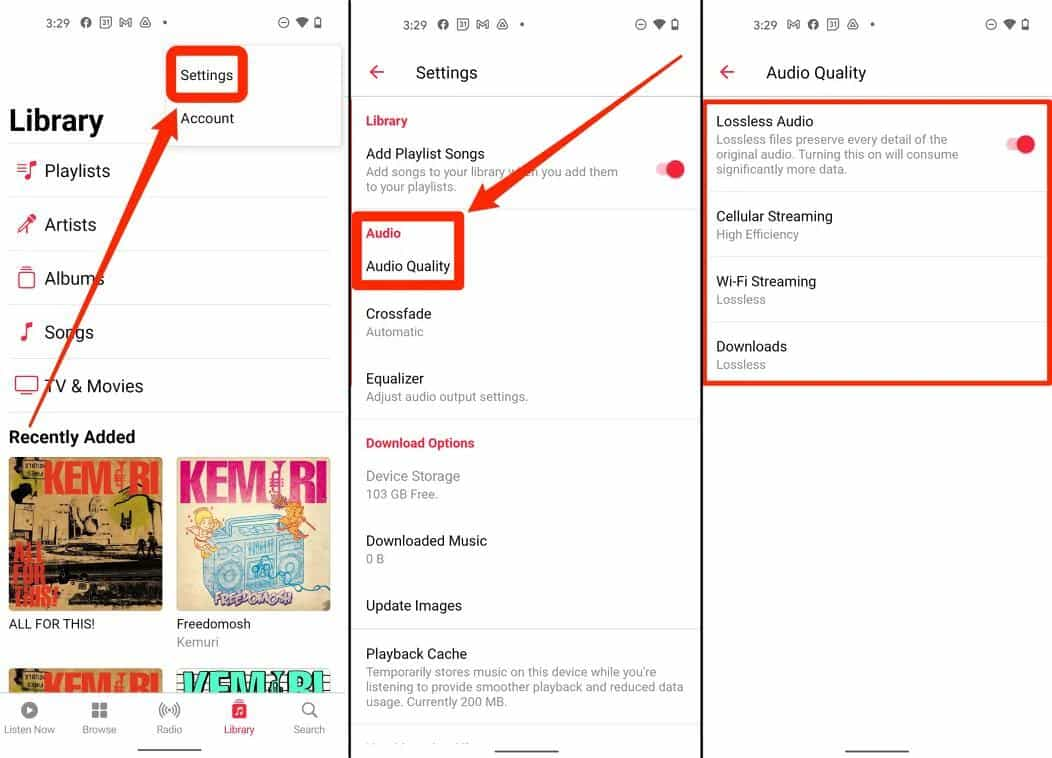
On a Mac:
- Launch the Music App on your Mac.
- Click on Music in the top menu bar.
- Select Preferences > Playback.
- Check the box next to Lossless audio.
- Select your audio quality setting for Streaming and Downloads.
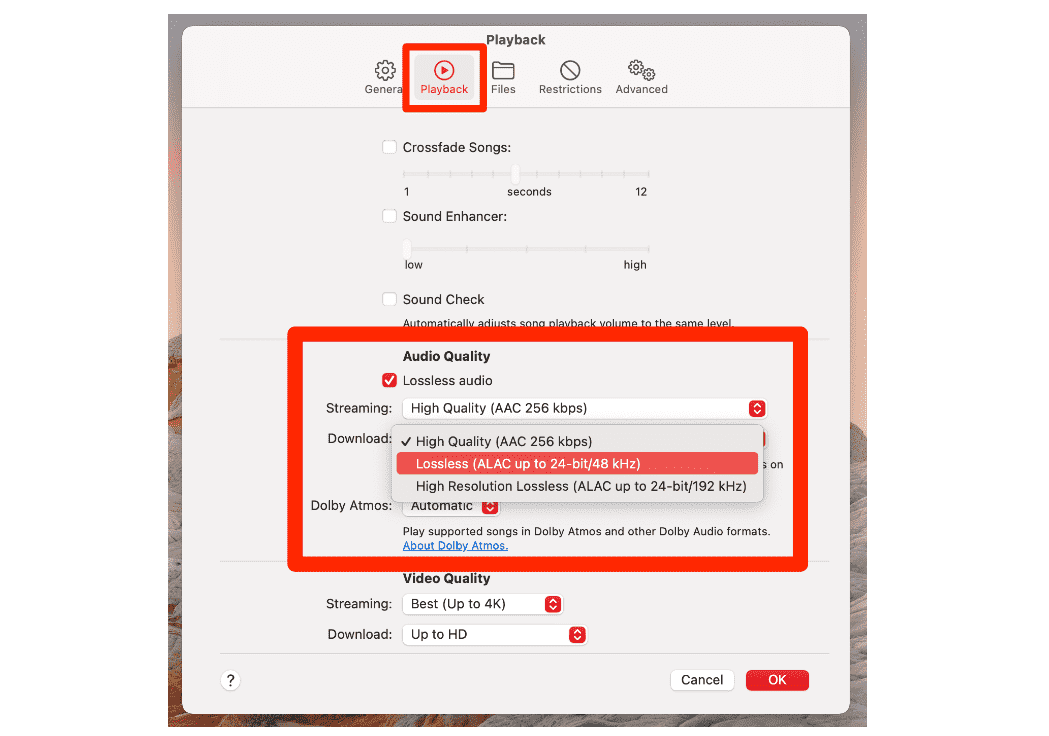
On Windows 11:
Apple Music app for Windows 11 now rolling out as beta on the Microsoft Store in 2023. It has almost all the same features available in the macOS version, except for the lyrics and Dolby Atmos. To change your Apple Music settings on Windows 11, refer to these steps:
- Once the app is downloaded, open it and sign in with your Apple ID.
- After you sign in, go to Settings> Playback.
- In the window that appears, toggle on the Lossless audio option.
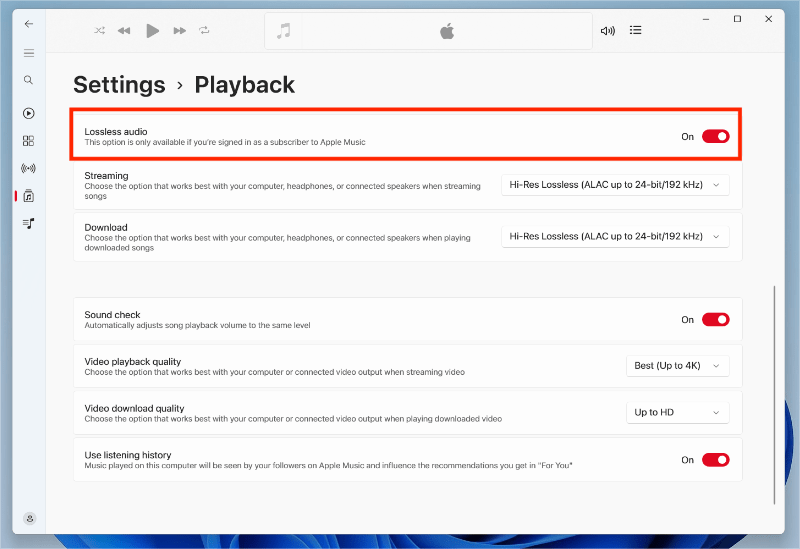
Part 4. How to Download Tracks and Playlists from Apple Music for Free?
In relation to our discussion about what is Apple Lossless and after knowing that files from the Apple Music service are enhanced to such, you must be wondering now if there is a way to download the items from the service. Downloading of music files from AMusicSoft Apple Music Converter is very possible and easy especially if you have a music subscription to begin with. Once the files are downloaded, you can stream them on multiple devices of your choice. But what ifyou do not have a subscription? Would it still be possible to get them?
As we all know, songs from Apple Music are DRM-protected. How to back up Apple Music under the DRM protection policy? The only way to do this is through the use of AMusicSoft Apple Music Converter. This tool is both a converter and downloader which can produce different supported audio formats. You can also listen to your favorite Apple Music songs offline.
If you are too worried about the quality of the converted tracks, you have to take note that AMusicSoft Apple Music Converter is very capable of retaining the quality of files even after the procedure done. If you will notice thoroughly, the quality is not far from the original.
AMusicSoft Apple Music Converter has a 16x working speed that can finish every single process in just a few minutes. It comes with a simple set of steps to follow as guide for the conversion process, it supports MP3, AAC, AC3, M4A, FLAC and WAV, and it can preserve all the related information particular to the tracks. Check out the steps below and download the music files from the service for unlimited streaming.
- Using the available browser on your device, navigate to the website of AMusicSoft and then click the Download button appearing right under Apple Music Converter. Installation procedure should follow once download is successful.
- A few minutes after installation, launch the music converter and then begin adding all the tracks to convert. Mark the box before each title as an indication that they are to be added.
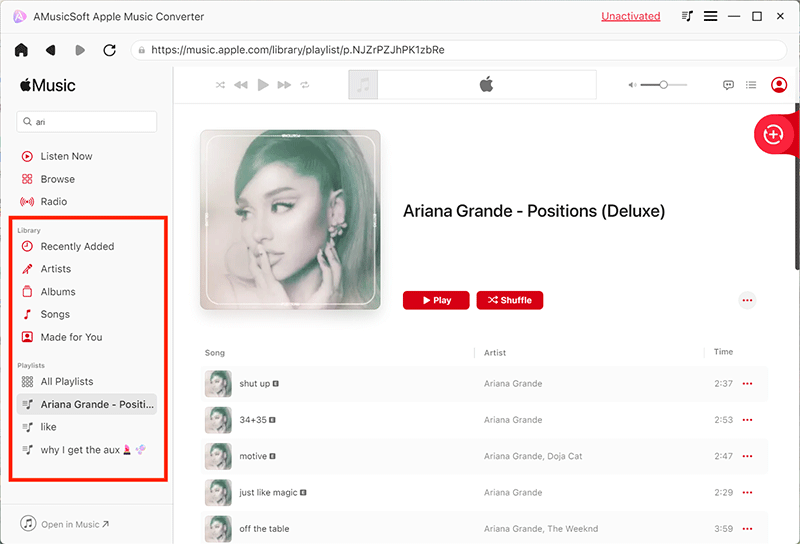
- Choose one format of conversion to utilize for the process and follow it with the selection of the end folder.
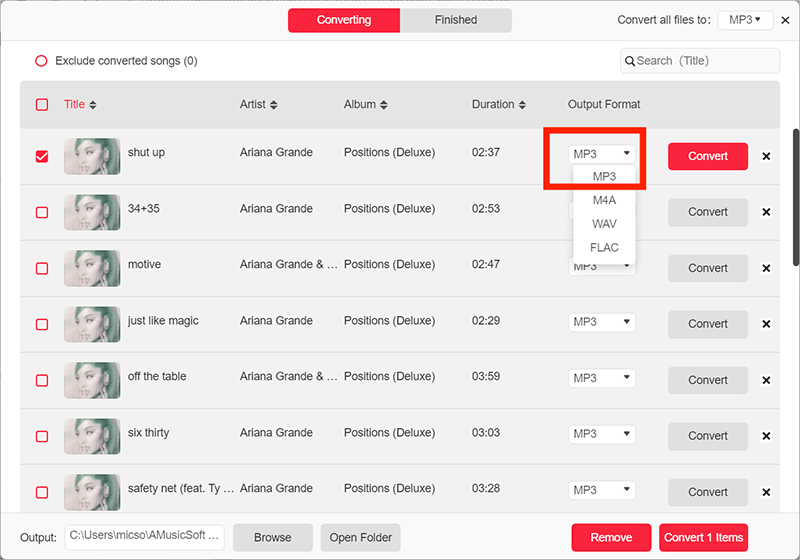
- Initiate the start of the process by hitting the Convert button.
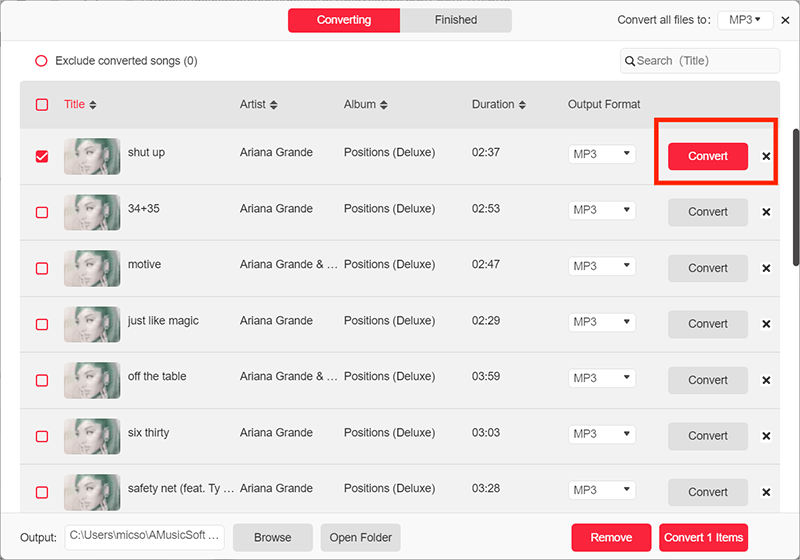
- Wait for a while until the process is done. To save the results, access the Converted section and check for tracks available for download.
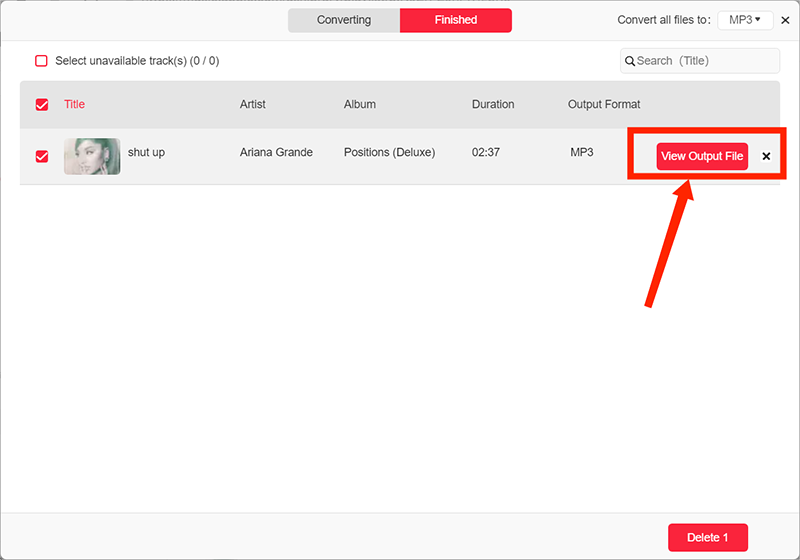
Part 5. Final Words
With the knowledge we have about what is Apple Lossless, you must be capable by now to assess which quality would give you a better sound and a better streaming session. Our discussion also gave us insights into the difference between lossy and lossless audio compression. On the other hand, you may use AMusicSoft Apple Music Converter to download high-quality Apple Music tracks and play them offline on any device you want without restrictions to think about.
People Also Read
- iTunes Not Syncing To iPhone? Easy Solutions To Fix It!
- Learning How To Get Soundcloud Songs On Apple Music
- How To Send Ringtone To iPhone Via Email, AirDrop And iTunes
- Best Way To Fix: Apple Music On Roku Not Working
- How To Easily Share Apple Music On Snapchat?
- The Causes Of Apple Music Keeps Crashing Error And How To Fix It
- Guide On How To Turn On/Turn Off iCloud Music Library
Robert Fabry is an ardent blogger, and an enthusiast who is keen about technology, and maybe he can contaminate you by sharing some tips. He also has a passion for music and has written for AMusicSoft on these subjects.